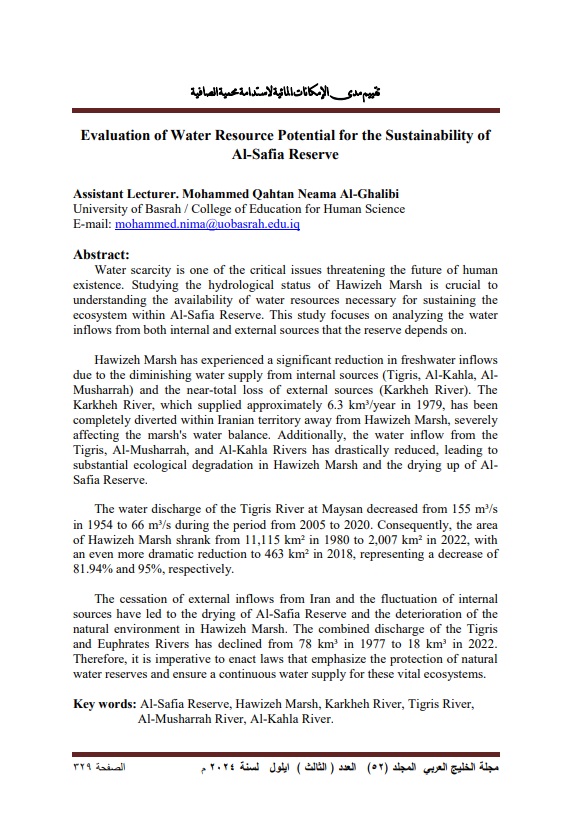Evaluation of Water Resource Potential for the Sustainability of Al-Safia Reserve
Keywords:
Al-Safia Reserve, Hawizeh Marsh, Karkheh River, Tigris River, Al-Musharrah River, Al-Kahla RiverAbstract
Water scarcity is one of the critical issues threatening the future of human existence. Studying the hydrological status of Hawizeh Marsh is crucial to understanding the availability of water resources necessary for sustaining the ecosystem within Al-Safia Reserve. This study focuses on analyzing the water inflows from both internal and external sources that the reserve depends on.
Hawizeh Marsh has experienced a significant reduction in freshwater inflows due to the diminishing water supply from internal sources (Tigris, Al-Kahla, Al-Musharrah) and the near-total loss of external sources (Karkheh River). The Karkheh River, which supplied approximately 6.3 km³/year in 1979, has been completely diverted within Iranian territory away from Hawizeh Marsh, severely affecting the marsh's water balance. Additionally, the water inflow from the Tigris, Al-Musharrah, and Al-Kahla Rivers has drastically reduced, leading to substantial ecological degradation in Hawizeh Marsh and the drying up of Al-Safia Reserve.
The water discharge of the Tigris River at Maysan decreased from 155 m³/s in 1954 to 66 m³/s during the period from 2005 to 2020. Consequently, the area of Hawizeh Marsh shrank from 11,115 km² in 1980 to 2,007 km² in 2022, with an even more dramatic reduction to 463 km² in 2018, representing a decrease of 81.94% and 95%, respectively.
The cessation of external inflows from Iran and the fluctuation of internal sources have led to the drying of Al-Safia Reserve and the deterioration of the natural environment in Hawizeh Marsh. The combined discharge of the Tigris and Euphrates Rivers has declined from 78 km³ in 1977 to 18 km³ in 2022. Therefore, it is imperative to enact laws that emphasize the protection of natural water reserves and ensure a continuous water supply for these vital ecosystems.




